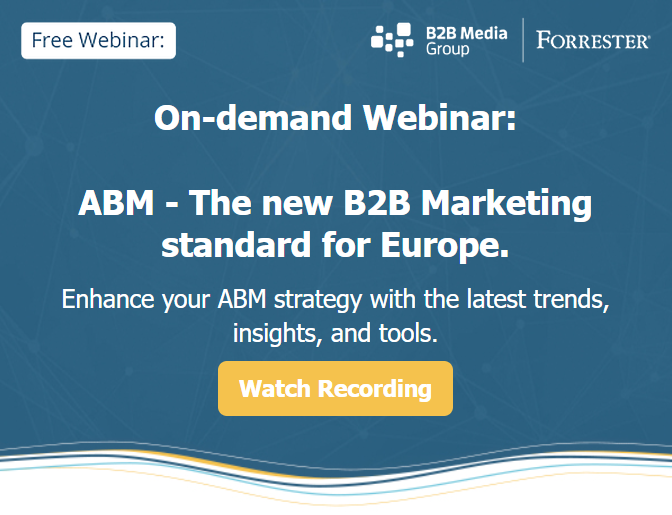The Power of Native Advertising for your B2B Brand

Native ads are likely to be the future of B2B online advertising. It has been an upcoming trend in the digital marketing space for a few years now, with native advertising growing by 50% from 2018 to 2019. Additionally, it is expected that native advertising will drive 74% of all ad revenue by 2021. With this increasing popularity of native ads, perhaps it is time for your business to invest in this marketing strategy.
Here we will go over the basics of native advertising, the benefits of using them and the key strategies on how to produce a successful native campaign.
What is Native Advertising?
Native advertising is a form of paid media where the advert naturally matches the appearance, feel and function of the medium on which it is placed. They are advertisements that fit seamlessly into the user experience on an editorial page. Hence, the name ‘native ads’ exists to reflect the advert’s aim of looking like its ‘native’ environment. Native ads can be found everywhere and in different forms, whether this be on B2B websites or social media channels.
Native ads differ from the more traditional display and banner ads in that they are not flashing and interrupting the consumers’ online experience. Rather than appearing across the top or by the side of a webpage, these ads instead blend into their background. This is what makes them such a unique and powerful form of advertising.
Why do Consumers like Native Ads?
Nowadays people are supplied with ads constantly. This can be a frustrating reality for many therefore, consumers have become very skilled at avoiding and ignoring adverts. This obviously provides an issue for B2B marketers. This is where native ads hold the upper hand.
Native advertising is an unintrusive, non-distracting and trustworthy form of advertising that is very popular and effective amongst B2B individuals. Consumers often prefer native ads over banner ads because they do not hinder their online browsing experience. The content of native ads always complements the content and context of the platform that they are situated on. Hence, they are relevant, useful and informative to the B2B user who is interacting with them. Native ads are providing value to the consumer and therefore, are an appealing form of advertising.
In contrast to flashy banner adverts, native ads often do not seem like an obvious advertisement to their viewers. This is a refreshing and attractive change for individuals who usually experience an overwhelming amount of disruptive ads online. Overall, native ads are deemed to be more authentic and trustworthy than banner ads.
Research has further demonstrated the effectiveness of native ads in comparison to traditional display ads:
- Consumers look at native ads 53% more frequently than banner ads.
- Consumers are 25% more likely to look at a native ad than a banner ad.
- Native ads are extremely compelling, registering an 18% increase in purchase intent than other ad formats.
- People are 32% more likely to share their native ad experience with others than with banner ads.
Strategies for Producing Effective Native Ads
In order for B2B marketers to reap the full benefits of native advertising there are a few important strategies that need to be considered:
1. Choosing the right platform/channel to suit your audience
Choosing the right spots to place your native ads is essential in determining their success. Your native ads need to be placed on websites and social media pages that are most relevant to your ad’s content. Using intent data to discover where your audience are most active online will help you to choose the correct platforms to place them. Putting your native ads in the right place will ensure delivery to the right audience. This will make it more likely that you will connect with higher-quality leads.
2. Match your environment
The content, context and creative of your native ads should naturally line up with that of the publishing sites or social media channels that they are presented on. This will allow your ad to fit the form and function of its background to create a smooth and undisrupted experience for your audience. Additionally, this ensures that the native ad content remains relevant, useful and informative to the user viewing them during their online browsing. Ultimately, this will boost your brand’s credibility as your advert’s content will resonate with your audience and be meaningful to them.
3. It is not about camouflage
Consumers do not like to be tricked. Therefore, it is essential that you make it clear that your ad is actually an ad. It is critical to find the balance between ensuring your native ad matches its background whilst making sure your audience realise what they are viewing is sponsored content. You should always label your native ad as an advertisement in order for it to be legal. Being transparent is key for maintaining a trustworthy brand image. Also, research has shown that labeled ads are the most effective ads!
4. Creating the right content
Creating relevant and informative content for your native ad will boost the likelihood that your audience will engage with it. After all, your customers are only going to read your content if it is interesting to them. Producing this ‘interesting content’ should be a relatively simple process, as it must be based on or related to the information contained on the channel / website on which it is placed on.
Conclusion
Businesses in the B2B landscape are gravitating more and more towards using native ads. This is due to their unique ability to resonate with their audience in a subtle, unintrusive and effective way. As native advertising becomes increasingly popular are you going to sit by and watch or are you going to make use of this type of advertising. After all, native ads will increase your brand awareness, boost customer engagement and generate high quality leads. Follow our key strategies to help you along the way.




